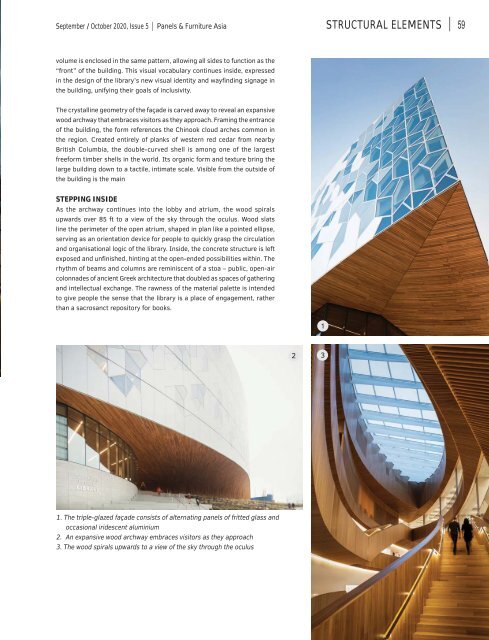Panels & Furniture Asia September/October 2020
Panels & Furniture Asia (PFA) is a leading regional trade magazine dedicated to the woodbased panel, furniture and flooring processing industry. Published bi-monthly since 2000, PFA delivers authentic journalism to cover the latest news, technology, machinery, projects, products and trade events throughout the sector. With a hardcopy and digital readership comprising manufacturers, designers and specifiers, among others, PFA is the platform of choice for connecting brands across the global woodworking landscape.
Panels & Furniture Asia (PFA) is a leading regional trade magazine dedicated to the woodbased panel, furniture and flooring processing industry. Published bi-monthly since 2000, PFA delivers authentic journalism to cover the latest news, technology, machinery, projects, products and trade events throughout the sector. With a hardcopy and digital readership comprising manufacturers, designers and specifiers, among others, PFA is the platform of choice for connecting brands across the global woodworking landscape.
Create successful ePaper yourself
Turn your PDF publications into a flip-book with our unique Google optimized e-Paper software.
<strong>September</strong> / <strong>October</strong> <strong>2020</strong>, Issue 5 | <strong>Panels</strong> & <strong>Furniture</strong> <strong>Asia</strong> STRUCTURAL ELEMENTS | 59<br />
volume is enclosed in the same pattern, allowing all sides to function as the<br />
“front” of the building. This visual vocabulary continues inside, expressed<br />
in the design of the library’s new visual identity and wayfinding signage in<br />
the building, unifying their goals of inclusivity.<br />
The crystalline geometry of the façade is carved away to reveal an expansive<br />
wood archway that embraces visitors as they approach. Framing the entrance<br />
of the building, the form references the Chinook cloud arches common in<br />
the region. Created entirely of planks of western red cedar from nearby<br />
British Columbia, the double-curved shell is among one of the largest<br />
freeform timber shells in the world. Its organic form and texture bring the<br />
large building down to a tactile, intimate scale. Visible from the outside of<br />
the building is the main<br />
STEPPING INSIDE<br />
As the archway continues into the lobby and atrium, the wood spirals<br />
upwards over 85 ft to a view of the sky through the oculus. Wood slats<br />
line the perimeter of the open atrium, shaped in plan like a pointed ellipse,<br />
serving as an orientation device for people to quickly grasp the circulation<br />
and organisational logic of the library. Inside, the concrete structure is left<br />
exposed and unfinished, hinting at the open-ended possibilities within. The<br />
rhythm of beams and columns are reminiscent of a stoa – public, open-air<br />
colonnades of ancient Greek architecture that doubled as spaces of gathering<br />
and intellectual exchange. The rawness of the material palette is intended<br />
to give people the sense that the library is a place of engagement, rather<br />
than a sacrosanct repository for books.<br />
1<br />
2<br />
3<br />
1. The triple-glazed façade consists of alternating panels of fritted glass and<br />
occasional iridescent aluminium<br />
2. An expansive wood archway embraces visitors as they approach<br />
3. The wood spirals upwards to a view of the sky through the oculus


















